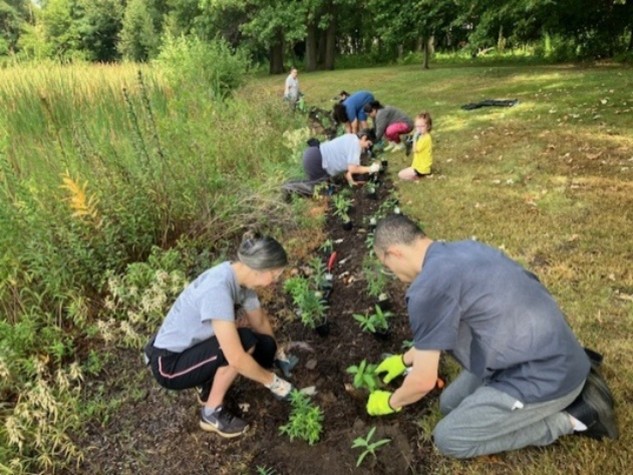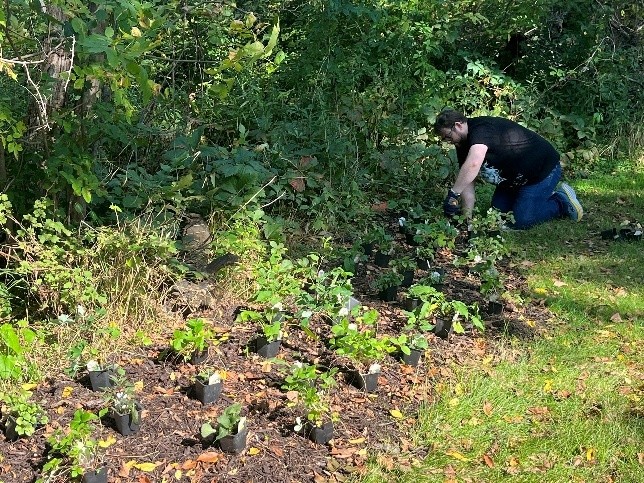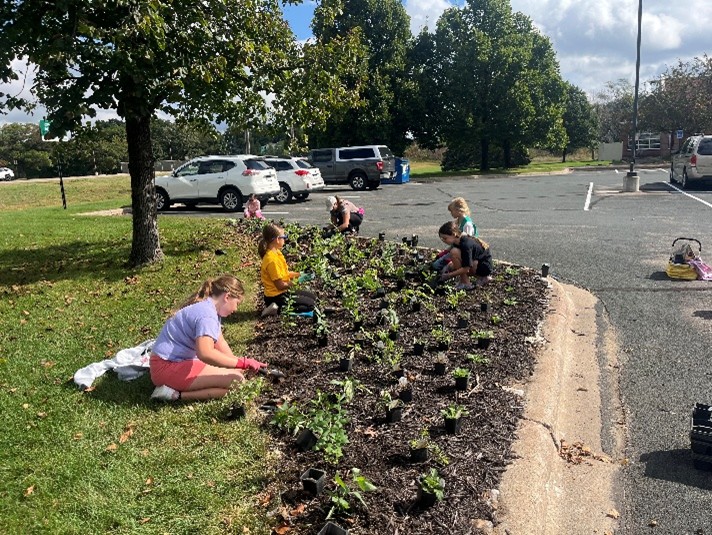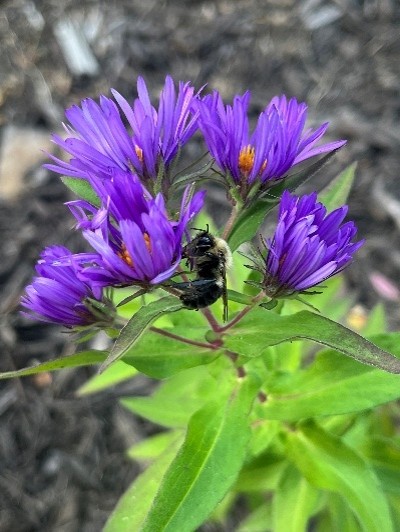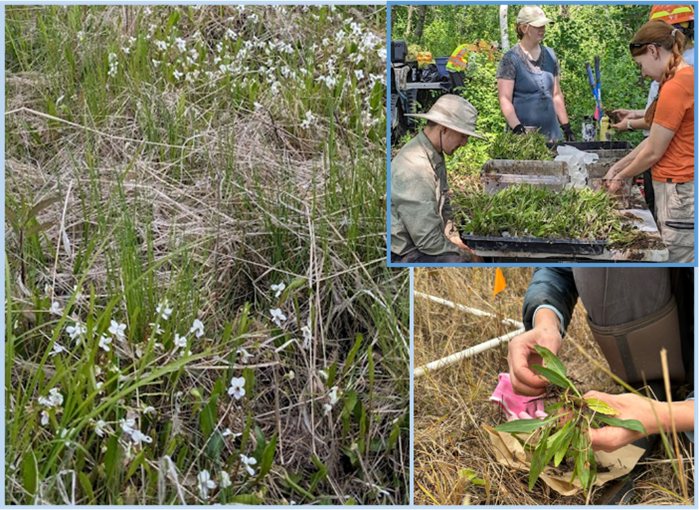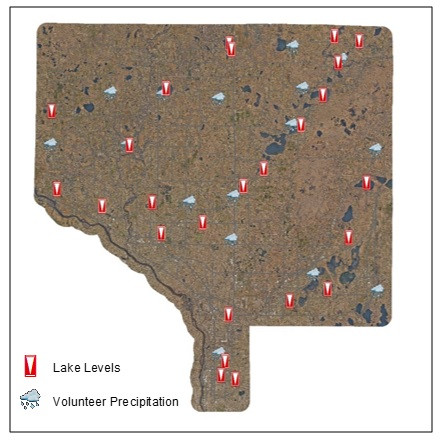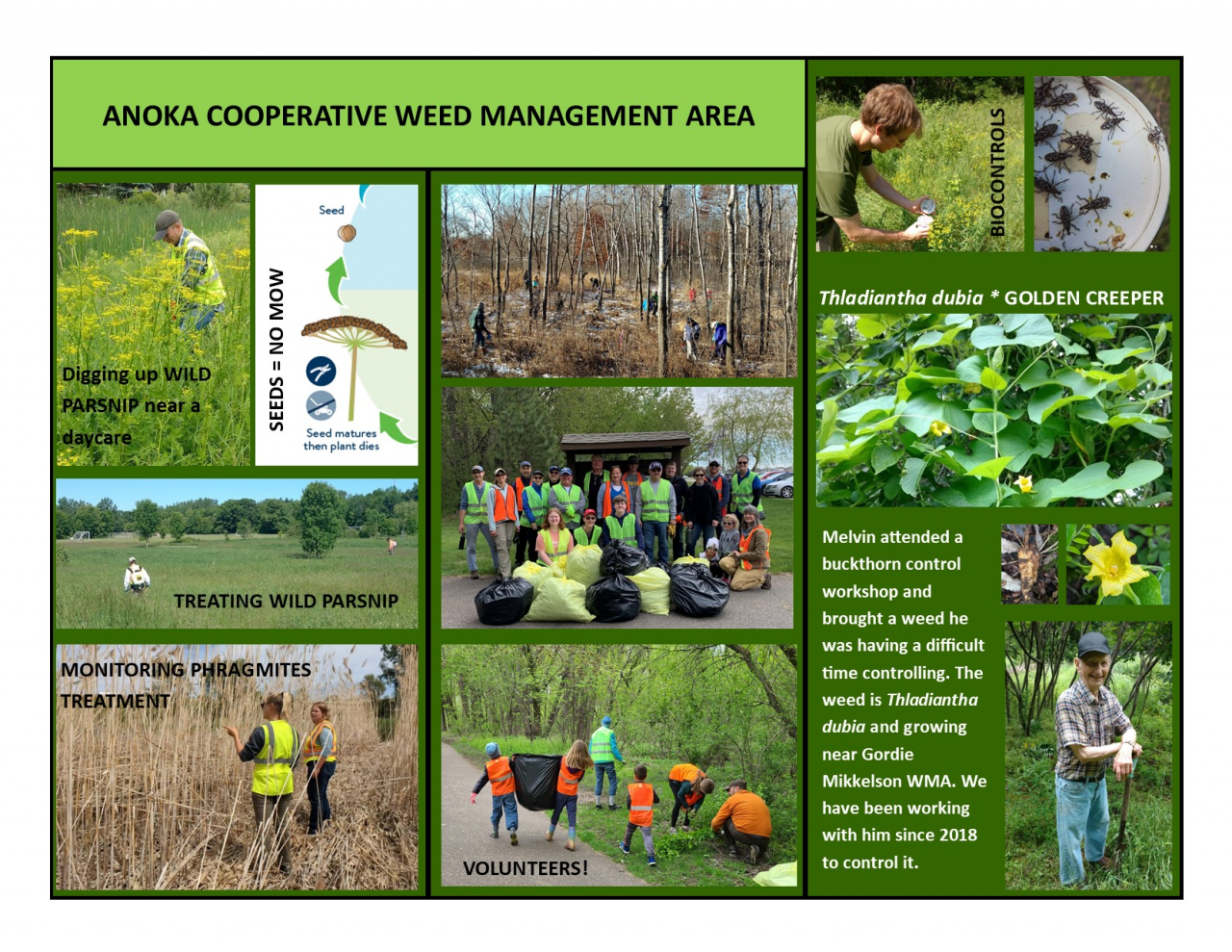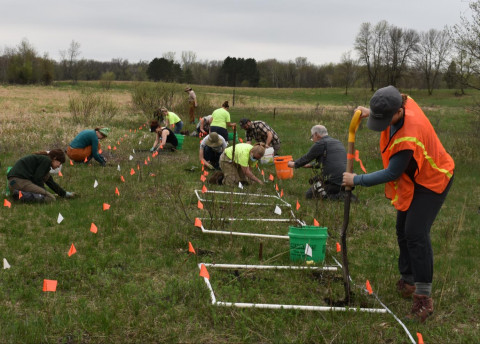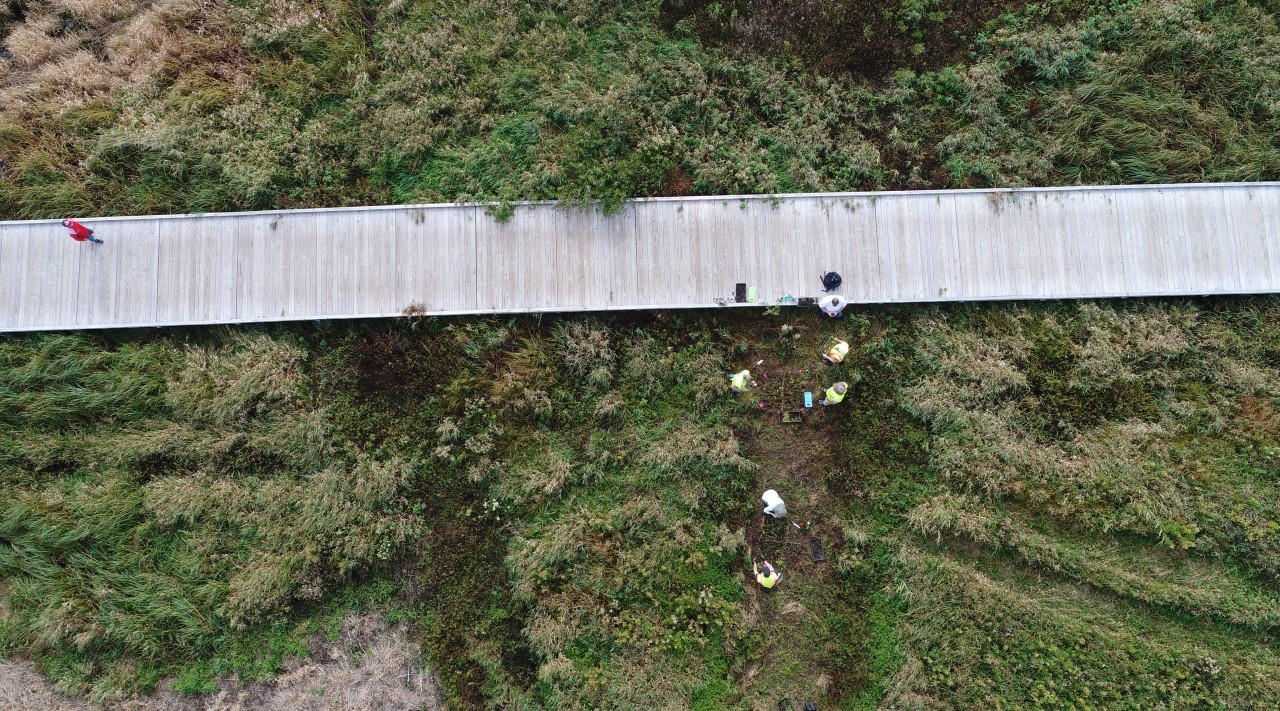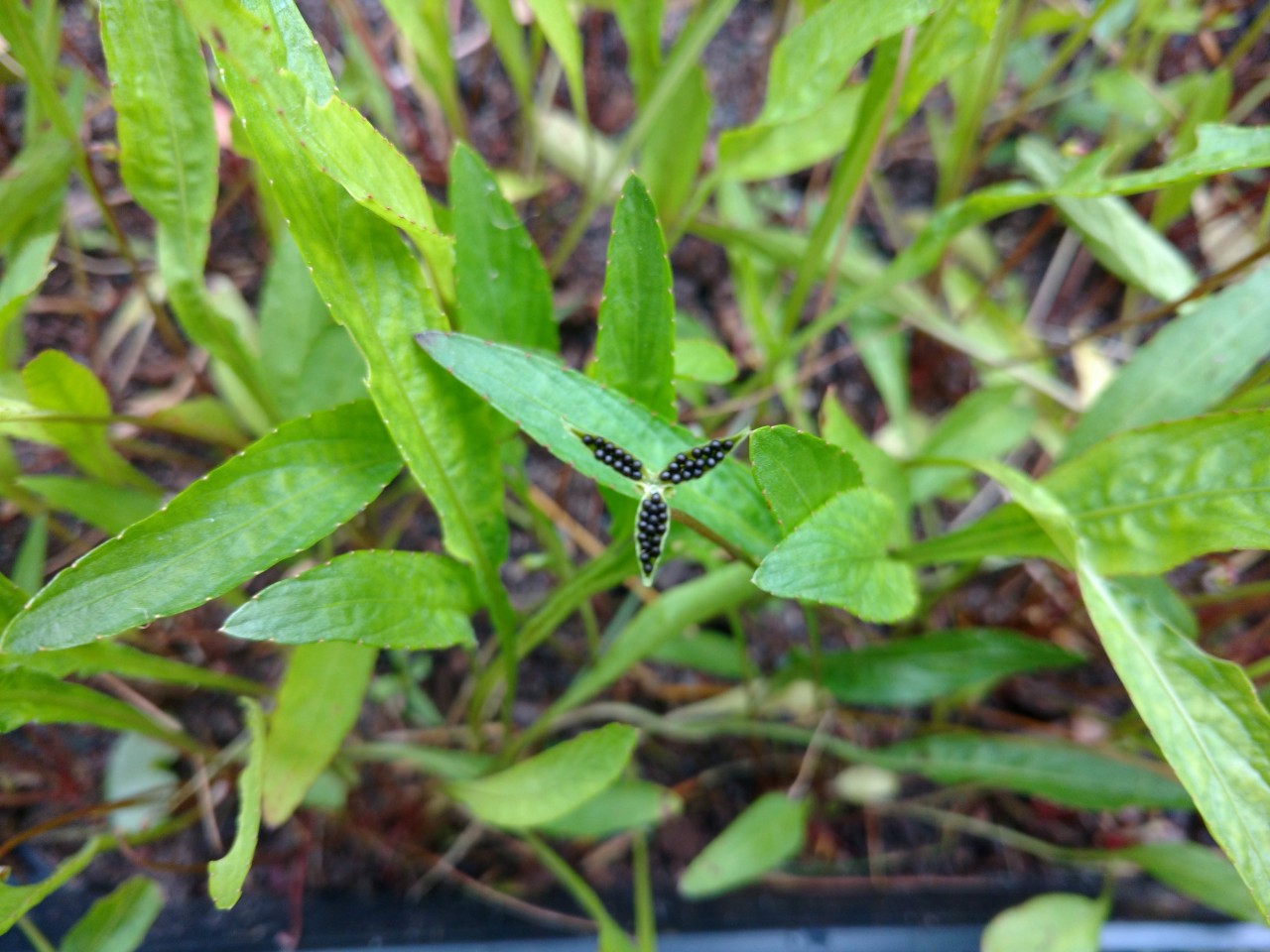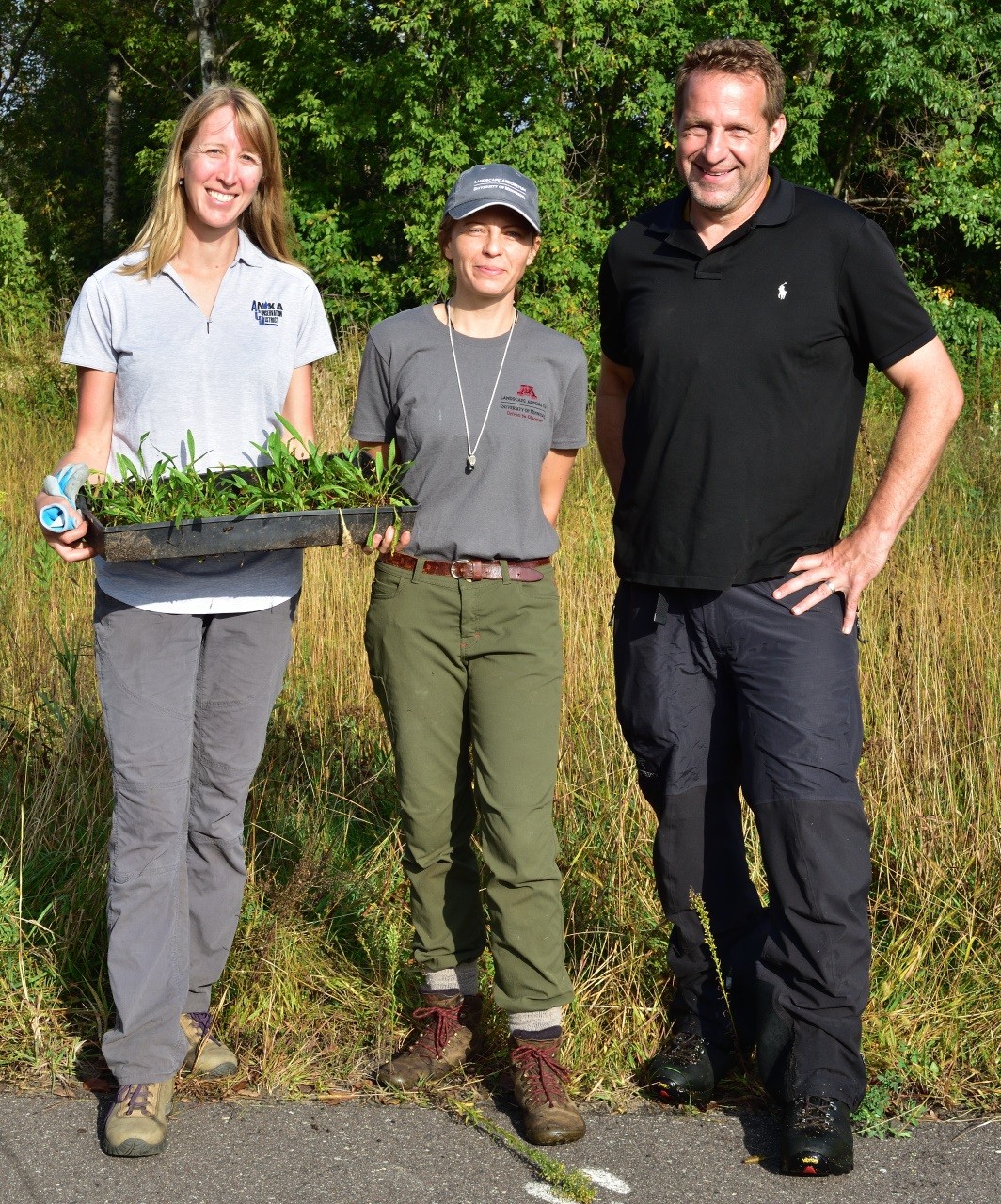In 2025, ACD partnered with three Anoka County libraries (Northtown Library, Johnsville Library, and St. Francis Library) to add native pollinator plantings to their properties. These small plantings have converted 650 sq ft of turfgrass into pollinator-supporting habitats and have connected residents to green spaces at their local libraries. We're excited to see these plantings flourish next spring!
Rare Plant Rescue Planting: Help plant rare lance-leaved violets that were rescued from a development in Anoka County. Please RSVP to plant rescued trees at the Beach Conservation District on Wednesday, October 22nd, at 10 am.
If you have questions, contact Carrie Taylor, Restoration Ecologist, at
ACD would like to send out a big thanks to our hardworking volunteers for all their great work during the 2023 monitoring season. State-wide data networks are made up of thousands of dedicated volunteers and provide some of the oldest and most reliable data in the state. These historical data sets are crucial for accurate trend analysis and assist in making informed management decisions. The data provided by volunteers helps verify high rainfall totals, provides critical information during flooding events, monitors drought conditions, and provides needed guidance on Minnesota's changing climate. Some of ACD's volunteers have been long time participants and have contributed data for over 15+ years.
The Volunteer Precipitation Monitoring network includes more than 20,000 volunteers nationwide who measure daily rainfall. Explore climate data through the Minnesota State Climatology database https://climateapps.dnr.state.mn.us/index.htm.
The Lake Level Monitoring Program documents seasonal fluctuations of water levels in around 1,050 lakes throughout Minnesota. Explore lake data through the Minnesota 'Lake Finder' database. https://www.dnr.state.mn.us/lakefind/index.html
For more information contact Kris Larson, Water Resource Specialist, at
"Climate is more than just numbers." – Jim Zandlo
BWSR awarded ACD $15,000 for the third phase of the Anoka Cooperative Weed Management Area. The Anoka CWMA formed in 2018 and consists of Anoka Conservation District, Anoka Parks, Cities, Watershed Districts, MN Department of Agriculture, and volunteers to coordinate invasive species control efforts in Anoka County. Anoka CWMA activities include mapping, monitoring, outreach, treatment on select populations, and provides some cost share assistance.
The Highway CSAH 14 (Main Street) is slated to expand and build storm ponds in an area with Rubus stipulatus, a MN Endangered rare plant. The Rare Plant Rescue Program, consisting of Anoka SWCD, Critical Connections Ecological Services, and MN Landscape Arboretum, coordinated with the MN DNR and Anoka Highway Department to salvage the plants prior to construction. As soon as development permits were complete and signed, the Rescue Program swiftly accessed the highway expansion site to dig out plants that were just emerging. Plants were taken to Bunker Hills Regional Park where Anoka Parks staff and Volunteers transplanted 200 plants into plots. Cuttings of Rubus stipulatus were also taken, and will be propagated at the MN Landscape Arboretum and planted in the fall. Rescue transplants will be monitored to assess survivorship and recruitment. This is all made possible with collaboration, Volunteers, and Anoka Sand Plain Partnership Outdoor Heritage Funds.
To learn more about this program and how to get involved, see the information flyer here: https://tinyurl.com/mnrp-flyer
Sign up on the Rare Plant Rescue Network form.
The Anoka Conservation District would like to thank our hardworking water monitoring volunteers for all the work they did throughout the 2020 monitoring season. Local volunteers install monitoring equipment near where they live and then take readings throughout the year. Water levels on a large number of lakes are recorded as well as tracking daily rain totals. This type of data is used in analysis and when making other natural resource management decisions. Data networks like these are not possible without the help of local residents. All of the data is available to the public through online databases operated by State of Minnesota.
Thank you Volunteers!
https://www.dnr.state.mn.us/climate/climate_monitor/precipcharts.html
Anoka Conservation District (ACD) has partnered with the Minnesota Landscape Arboretum (MLA) and Critical Connections Ecological Services (CCES) to salvage thousands of rare lance-leafed violets (Viola lanceolata)—a Minnesota State Threatened species—from permitted construction sites in Blaine, MN. Thanks to the new MN Department of Natural Resources 'Permit for the Propagation of Endangered or Threatened Plants', volunteers and staff from the City of Blaine, ACD, MLA, CCES, and the surrounding community were able to take these rare plants, clean them to remove weed seeds, and then transplant them into the protected Blaine Wetland Sanctuary. The newly planted lance-leaved violet populations will be monitored over time to determine the effectiveness of transplanting.
"Salvaging threatened and endangered plants from development projects where they would otherwise be destroyed provides an important opportunity to explore transplant options and to collect critical information about these rare plants. We aim to develop salvage and management protocols and monitor the efficacy of transplanting rare plants," said Carrie Taylor of the Anoka Conservation District.
"We have seen the destruction of many rare plant populations over the past couple of decades due to development. We are grateful for the MN DNR's new 'Permit for the Propagation of Endangered and Threatened Plants' so that we can move these plants to protected areas and learn how best to manage them," said Chris Lord, of the Anoka Conservation District.
Anoka County is home to many unique habitats and rare species. However, development is rapidly increasing in the County, causing fragmentation of the landscape and threatening rare plant populations. The construction sites received a DNR permit that allows for the 'Take of Endangered or Threatened Species Incidental to a Development Project.' As part of that permit, a compensatory mitigation is paid to fund activities that result in a net-benefit to the species. When the 'taking' or removing rare plants from a development project area is unavoidable, rare plant salvage is an alternative conservation practice undertaken to transplant those plants that would otherwise be destroyed. Jason Husveth, principal ecologist with CCES, credits the developer, The Excelsior Group, for helping to make this happen despite incurring addition time and cost.
While salvage of rare plant species occurs in many states, there is no established process for doing so in Minnesota. Critical Connections Ecological Services, Anoka Conservation District, and the Minnesota Landscape Arboretum are seeking funding to develop an ongoing Rare Plant Salvage Program for Minnesota.
